CUCO project seeks to take a step forward in the quantum algorithms’ state of the art and to apply the acquired knowledge into a series of concept tests in different several strategic sectors of the Spanish economy such as Energy, Financial, Space, Defence and Logistics.
Goals
- Further scientific and technological knowledge of quantum computing through public-private partnerships between companies and research centers and universities of acknowledged international prestige, so as to accelerate the implementation of these technologies for use in the medium term.
- Identify a series of significant use cases (Energy, Finance, Space, Security/Defense, and Logistics) for trialing proofs of concept (PoC), to see whether quantum computing improves the performance of classical computing, and evaluate this improvement if any.
- Share best practices between centers of knowledge and companies in different technological and business spheres, to enable collaboration that is effective because these entities are not competing against each other.
- Position the Consortium and its companies as benchmarks in quantum computing in their sectors of application, so they can participate in international objectives like Quantum Flagship, Horizon Europe, or European Defence Fund.
Work packages
PT1: Requirements and specifications
For this line of research, it is proposed to assess the viability and benefits brought by quantum computing to solve a selection of use cases within the field of Earth observation. The following preliminary examples have been identified: Classification of satellite images; crop distribution optimization; identification of buildings to determine their energy consumption; detection of urban change to see trends in land use (invasion of rural or protected spaces, evolution of urban areas, etc.) and demography; detection, tracking, and traceability of marine litter close to coasts.
The process of compiling information by intercepting signals is known as signals intelligence (SIGINT). The problems arising in the field of SIGINT are often formulated as problems of classification, detection, estimation, or optimization. ML techniques can provide elegant and practical solutions to all these problems. Two of the most important are: 1) Identification of the intrapulse RADAR modulation used by an unknown radar transmitter, as this can offer key information about it; and 2) tracking sources with low interception probability used by the most advanced military radio and radiocontrol (such as drones), principally frequency-hopping spread spectrum (FHSS) sources, which are very difficult to monitor because of the near-instantaneous and pseudorandom changes of frequency, which complicate the application of countermeasures (like jamming).
This line of research will look at two current optimization problems facing the logistics sector:
- Indoor and outdoor route optimization (respectively, warehouses and delivery points), to enhance distribution fleet efficiency.
- Truck loading and unloading optimization.
In this line of research, the different possible applications of quantum computing in the energy sector, with a view to its sustainability, will be analyzed. A series of strategic cases for zero net emissions scenarios by 2050 will be assessed: this is a pioneering undertaking given by Repsol.
In this line of research, the viability of new algorithms from or inspired by quantum computing will be studied for problems in the finance sector. In particular, this includes new algorithms for optimization, simulation, Monte Carlo methods, classification, and differential equations, based on quantum computing, and possibly accelerated using classical techniques. The objective is to conduct an initial study of the viability of these new algorithms for finance problems with real data, using current processors (of NISQ type). These finance problems will include investment portfolio optimization, market prediction, financial market simulation, fraud detection, AML, derivative pricing, and risk calculation, as well as others.
Exploration, evaluation, and design of algorithms from or inspired by quantum computing for the finance and logistics sectors, covering problems of simulation, optimization, and challenging sustainability problems.
PT2: Research on quantum algorithms
In this line of research, we will develop different quantum algorithms to solve problems in stochastic sampling and partial differential equations (PDEs), especially for systems of many variables and dimensions, using techniques combining quantum and classical algorithms. Special emphasis will also be placed on applying quantum-inspired techniques like tensor networks, so as to speed up certain processes and improve their accuracy. The objective is to develop these new algorithms explicitly so they can cope with realistic problems using real data on current processors (of NISQ type). Our ultimate objective is to be able to apply these algorithms to different problems and use cases such as in finance, energy, life sciences, and mobility.
In this line of research, the possibilities opened up by quantum computing for molecular simulation will be developed. It should be said the current state of development of these algorithms is a long way behind that of optimization algorithms. Indeed, even well-known molecular simulation techniques like DFT (Density Functional Theory) are known to offer poor accuracy in problems of a certain complexity. Different quantum approaches to molecular simulation will be explored. Some of these use gate-based quantum computers, others use annealers and numerical approximations based on tensor networks. Moreover, the evolution of NISQ devices is not expected to permit detailed simulation of heavy molecules in the short term, so that hybrid solutions will be explored. Specifically, hybridizing quantum annealers and fermionic tensor networks will be investigated. These techniques will be developed generally and applied in the cases envisaged in PT1, associated to energy transition scenarios.
In this line of research, the possibilities offered by quantum computing in optimization will be developed. Different approaches to solving will be explored: from implementing HPC libraries to purely quantum implementations, and including quantum-inspired algorithms. Hybrid solutions making the most of HPC-QC synergies will be developed, thus raising the TRL of the solutions studied. New optimization algorithms based on a satisfactory combination of different technologies, both quantum and quantum-inspired, will be investigated. The objective is to develop a battery of quantum optimization solutions (whether pure, or hybridized with others), offering a competitive advantage in solving optimization problems with real devices of NISQ type.
Quantum Machine Learning has become consolidated as one of the most promising applications of quantum computers. Automated quantum learning algorithms or models endeavor to use the advantages of quantum information to improve classical automated learning: for instance, by exploiting superimposed quantum states. Quantum Machine Learning thus promises a significant quantum advantage because the complexity of the sample is reduced considerably, and the training times are also reduced. The aim of this line of research is to study the potential quantum technologies for driving learning algorithms, and the benefits that could be furnished by current and future quantum technologies to machine learning, centering on algorithms that pose a challenge to classical computers, and on especially complex databases (such as those that are highly unbalanced).
The first step is solving a problem using the quantum computing paradigm is the preparation of the dataset to be processed: in other words, the set of classical data must be adapted into a format understandable by quantum computers. This is a highly complex task, as each quantum computer requires its own coding schemes, so that a different dataset must be defined for each computer (Fujitsu, D-Wave, IBM, etc.). Moreover, the absence of a universal encoding strategy means that each specific problem could require the adoption of a specific scheme, thus increasing the complexity of the situation, and making preliminary study of the data available necessary. The objective of this line of research is to look at how to simplify this process by analyzing different types of data encoding, and the design and development of a code translation compiler for different quantum platforms.
The objective of this line of research is to provide a set of measures for objective certification of the computational capacity of a classical computer (like a supercomputer or HPC cluster), or a quantum computer. Detailed estimation of the resources necessary to complete a computation is a complex task, both for traditional computer systems and experimental quantum devices. These resources include run time, storage space necessary, energy consumption, and production cost.
PT3: Proofs of concept
The aim of this line of work is to compare the different quantum or hybrid (classical-quantum) architectures to investigate their performance and possibilities for Earth observation problems, which are currently unsolvable, or can only be tackled with classical systems in certain cases.
The purpose of this line of research is to generate synthetic data representing the signals of interest (RADAR modulations and FHSS), so that the different quantum architectures to be developed can be trained. Similarly, a proof of concept will also be conducted looking at the utility of the QNNs designed in the SIGINT applications considered, using cloud quantum computing platforms and real signals. Finally, the results obtained will be analyzed.
In this line of research, the proofs of concept for quantum optimization algorithms defined and adapted to the use cases of the logistics sector in a will be conducted in a laboratory environment, with the ultimate aim of assessing the viability of these new models and verifying the benefits over the classical approach they offer.
In this project, the new quantum and quantum-inspired algorithms, developed in the earlier work package, will be implemented for problems relating to energy. In particular, the objective is to implement these algorithms in the production chain of institutions in the energy sector, using real data on current processors (NISQ type). These energy problems to be looked at initially include calculating chemical reaction paths; the capture and use of CO2 using catalysts; and the optimization of energy markets.
In this line of research, new quantum and quantum-inspired algorithms, developed in the earlier work package, will be implemented with problems in the finance area, in the context of a proof of concept. In particular, the future objective will be to implement these algorithms in the production chain of financial institutions, using real data on current processors (NISQ type). The finance problems we will focus on will include investment portfolio optimization, market prediction, financial market simulation, fraud detection, AML, derivative pricing, and risk calculation, as well as others.
Exploration, analysis and implementation of quantum or quantum-inspired algorithms for problems of simulation, optimization, sustainability challenges, and risk assessment.
The aim of this line of research is to devise and calculate experimental magnitudes in the laboratory for classical and quantum devices, offering basic information about resource consumption. Combined measures will be taken to offer estimates of the magnitudes and estimators developed in L2.6.
- The measures can be adapted to very different run architectures. Initially, these are a wide variety of classical devices including HPC (high-performance computers), like those available at the BSC. The same magnitudes will be evaluated on quantum calculation systems like those developed by Qilimanjaro.
- A scale analysis will be carried out of the resource consumption trend in calculation scenarios, by increasing the size of the problem. This point entails an important study of complexity analysis for calculation. The analysis will yield measures of how the computation behaves asymptotically, and we can extrapolate its behavior to very large cases, beyond the capacities currently available.
- Finally, measures will be provided for realistic test batteries, to certify the usefulness of quantum computing technologies for actors with a practical, short-term interest.

